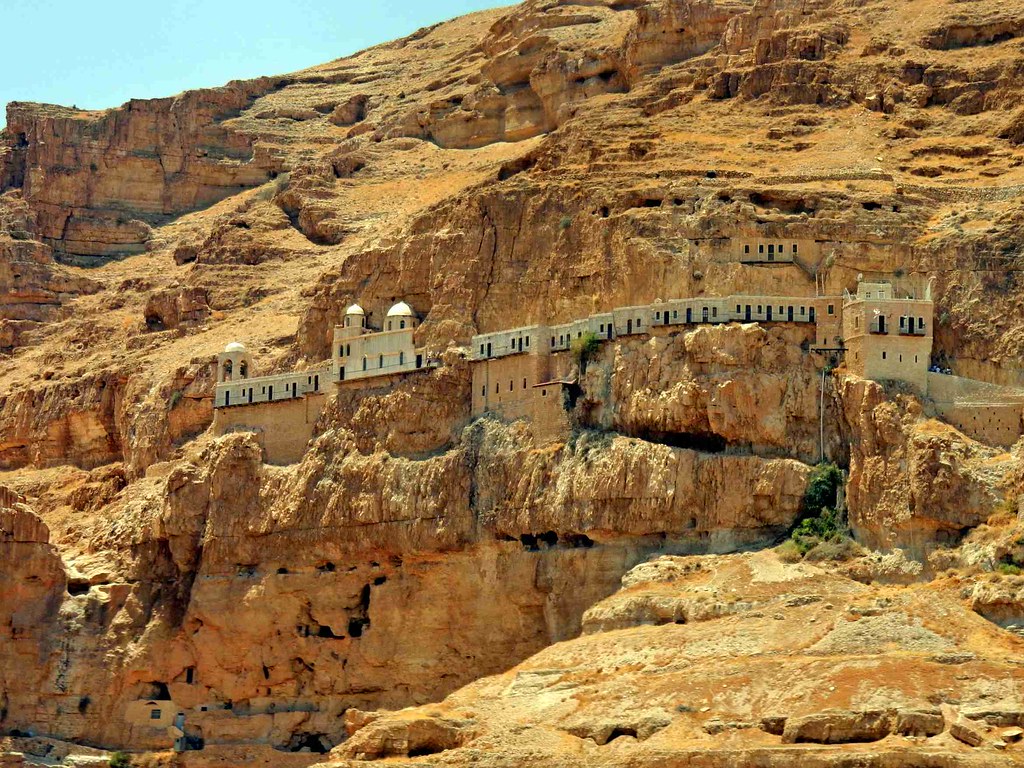Ancient Jericho was located at the foot of the Judean Mountains, 10 km from the Jordan River and about 12 km northwest of the Dead Sea. It is the oldest excavated city in the world, with some 6,000 years of almost uninterrupted settlement. It is also one of the lowest cities in the world, more than 204 m below sea level and 914 m below Jerusalem, which is only 22 km away1. Thanks to its long, rainy spring and fertile soil, the city has earned a reputation as the “city of palm trees”. The major road running east-west through Jericho, coupled with its proximity to the Jordan, made it a strategically important location.
History of the excavation and dating of Jericho
A great effort has been made to find ancient Jericho. The peculiarity of the search was the need for science to reconcile the Bible with history: most of the scientists and archaeologists of the past were Christians. They searched for Old Testament evidence in Egypt and Syria, Babylon and Palestine. Tobler and Robinson, in the mid-19th century, excavated a hill in the middle of the plain near Jordan, but found nothing. In 1867 Charles Warren also excavated the hill, descending 9 metres and using shafts, but he was unable to understand the structure of the layers and his archaeological research was unsuccessful5 . In 1894 the Blaze scientists turned their attention to the same hill and concluded that Jericho was hidden beneath it. In 1904 the Germans Tirsch and Gelscher visited the site and collected new data, indicating the correctness of the conclusions of those who tried to find Jericho in the vicinity of Erichi6. As a result, the monumental remains of the city were discovered in the deep layers of the huge hill of Tel el-Sultan on the right bank of the Jordan River. This hill covers an area of 4.05 ha and is 21 m high. The entire stratum consists of the remains of settlements and necropolises from many different periods. The presence of undrained springs has made it possible for the hill to have been inhabited for an astonishingly long and virtually uninterrupted period.
The first studies of the ruins of Jericho on Tel el-Sultan Hill were carried out between 1907 and 1909 and again in 1911 by an Austro-Hungarian archaeological expedition led by Ernest Zellin and Karl Watzinger. Their aim was to find confirmation of the biblical accounts of Jericho’s destruction at the hands of the Israelites, but instead Watzinger’s research concluded that Jericho was not inhabited during the Late Bronze Age (i.e. during the conquest traditionally dated to 1400 BC). Although ceramic dating was not yet well developed for this period, this dating seems to cast doubt on both the early and late versions of the conquest.
Nevertheless, the contribution of Zellin and his colleagues to scholarship can be seen in the fact that the history of Jericho itself ceased to be calculable from Joshua onwards, and the scholarly world obtained one of the oldest cities in Canaan, dating it to the 3rd-4th millennium BC. (later these dates began to shift towards an even earlier settlement).8 In the Hebrew Scriptures, the first time the Hebrews appear was in the Middle Ages, and the first time in the Old Testament, when the Israelites were in the midst of the Israelites, and the Israelites were in the midst of the Israelites.
Conclusion
In conclusion, it is necessary to summarise the results of the study and draw conclusions. First, if one accepts Bryant Wood’s assessment of the archaeological evidence (and it seems the most convincing), one has no choice but to accept that Jericho fell around 1400 BC, which is fully consistent with the biblical chronology. Among the clear facts, also consistent with the biblical narrative, are the following: the walls of the city collapsed outward (Joshua 6:19); the city was not robbed, for, according to Joshua 6: 20, all that was in it was put under the curse; the city was destroyed by fire (Josh. 6:23); houses were discovered in the wall, such as the house of Raav (Josh. 2:16); the city was taken in the spring, immediately after the harvest (Josh. 2:6, 3:15, 5:10); the city was well fortified (Josh. 2:5; 7:15; 6:4-5, 19); the inhabitants of the city had no opportunity to escape with their possessions (Josh. 6:1); the siege was not long (Josh. 6:15).
The eleventh chapter of the Epistle to the Hebrews, called the chapter of the heroes of faith, in relating the manifestations of faith in different ages, also recounts the example of faith in the capture of Jericho44. The story of this city has always served, on the one hand, as an affirmation of the Christian faith and, on the other, as a target for critics who mocked the biblical account. The latter is because the case of Jericho was a particularly striking example of God’s intervention in the course of history. The controversy surrounding this city often flared up, and the attacks of some scholars were so great that even some believers came to regard the story of the capture of Jericho as a mere legend without historical basis. But, as in many other cases, the archaeological excavations confirm the truth of the Bible, shamefully silencing the materialistic scholars. For true believers, these discoveries have been a joy, for the whole world has seen the facts confirming the words of Scripture.
As for the sceptical view that ancient Jericho may have existed long before the conquest described in the Old Testament, for believers who stand firm on the foundation of infallibility and the infallibility of Scripture, a quite biblical compromise is possible. In fact, the probability of the existence of an older city does not in any way exclude its existence at the time of Joshua. That is to say, even supposing that a number of testimonies were nevertheless correctly dated by Kathleen Kenyon, this in no way suggests that the other finds mentioned by Garstang could not indicate a later period, namely that of the destruction of Jericho by Jesus around 1400 B.C. The decisive factor in this problem therefore ultimately becomes faith in God and His written Word.
You may also like:

